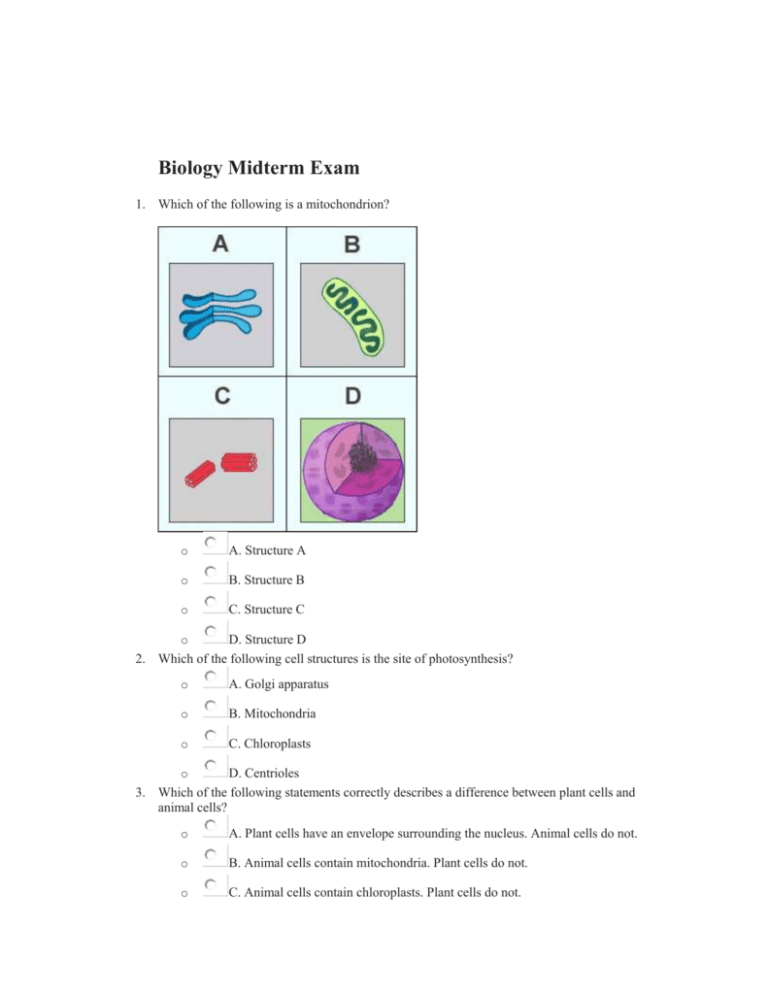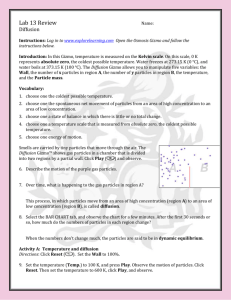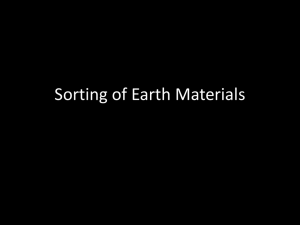Biology Mid Term - FRC-OCS
advertisement

Biology Midterm Exam 1. Which of the following is a mitochondrion? o A. Structure A o B. Structure B o C. Structure C o D. Structure D 2. Which of the following cell structures is the site of photosynthesis? o A. Golgi apparatus o B. Mitochondria o C. Chloroplasts o D. Centrioles 3. Which of the following statements correctly describes a difference between plant cells and animal cells? o A. Plant cells have an envelope surrounding the nucleus. Animal cells do not. o B. Animal cells contain mitochondria. Plant cells do not. o C. Animal cells contain chloroplasts. Plant cells do not. o D. Plant cells are surrounded by a cell wall. Animal cells are not. 4. In what cellular function does the structure shown here play a role? o A. They play a major role in protein synthesis. o B. They act as the powerhouse for the cell. o C. They are involved in the separation of chromosomes during cell division. o D. They are involved in photosynthesis. 5. Which of the following is nicknamed the "powerhouse" of the cell? o A. Nucleolus o B. Vesicles o C. Mitochondrion o D. Golgi apparatus 6. In the system shown below, there are 80 x particles, all in region A (the left half of the box). No extra particles can enter the system. When the system is in equilibrium, what will be true of the particles? o A. Since there are no y particles, the system is already in equilibrium with all 80 x particles in A. o B. Due to the constant motion of particles, this system will never reach equilibrium. o C. In equilibrium, there will be exactly 40 x particles in A and 40 x particles in B, and those numbers will remain constant. o D. In equilibrium, there will be approximately 40 x particles in A and 40 x particles in B, and those numbers will fluctuate but will remain near 40. 7. The bar chart below shows data for a system with two types of particles, x and y, in two connected regions, A and B. Which line graph best depicts the data in the bar chart? o A. Graph A o B. Graph B o C. Graph C o D. Graph D 8. Which arrangement of Gizmo settings will produce the highest rate of diffusion? o A. the settings shown in A o B. the settings shown in B o C. the settings shown in C o D. the settings shown in D 9. Which statement most accurately describes the system of particles represented in the following bar chart? o A. In equilibrium, with an equal number of x and y particles o B. In equilibrium, with more y particles than x particles o C. Not in equilibrium, with an equal number of x and y particles o D. Not in equilibrium, with more y particles than x particles 10. Your lungs are constantly exchanging oxygen and carbon dioxide between your body cells and your blood cells by diffusion. As you exercise intensely, your body temperature increases slightly. How does this affect the process of diffusion? o A. The rate of diffusion increases due to your slightly higher body temperature. o B. The rate of diffusion decreases due to your slightly higher body temperature. o C. The rate of diffusion is unaffected by changes in temperature. o D. Diffusion stops completely during periods of over-exertion. 11. A normal plant cell holds water in the vacuole of the cell. This large organelle also gives the cell support. Suppose a plant is submerged in salt water. As a result, the vacuoles collapse and the leaves wilt. This condition is called plasmolysis. Which explanation do you think best describes what happens to the cells of that plant during plasmolysis? o A. The water diffuses out of the cell to equalize the solute concentrations. o B. The water diffuses into the cell to equalize the solute concentrations. o C. The solute (salt) moves inside the cell to equalize the solute concentrations. o D. The solute (salt) pushes on the vacuole of the plant cell causing it to collapse. 12. The images below show the same cell, before and after reaching equilibrium. Which statement best describes what happened as the volume of the cell increased? o A. The number of solute particles inside the cell decreased. o B. The number of solute particles outside the cell decreased. o C. The number of solvent particles inside the cell decreased. o D. The number of solvent particles outside the cell decreased. 13. Which of the following bar charts describes a system that is in solution equilibrium? o A. Graph A o B. Graph B o C. Graph C o 14. o D. Graph D Using the information below, what will happen to the cell as it reaches equilibrium? A. The cell will get smaller. o B. The cell will get bigger. o C. The cell will stay the same size. o D. The change in cell size cannot be determined. 15. A sample of seaweed contains two liters of water and has 100 grams of salt dissolved in its cells. The seaweed is placed in a bucket with 4 liters of water and 300 grams of dissolved salt. What will occur when the system reaches equilibrium? o A. The seaweed will absorb 40 grams of salt. o B. The seaweed will lose 0.5 liters of water. o C. The seaweed will absorb 1.0 liters of water. o D. The seaweed will absorb 5.5 liters of water.









